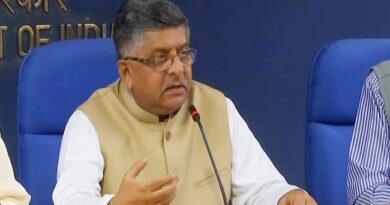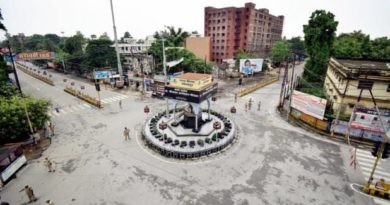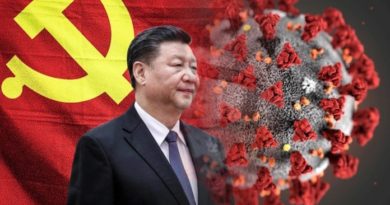Gaura Devi—the lady behind the world’s biggest ‘Chipko Movement’
Uttarakhand has gone through many tragedies since the British period. But with time, forgetting the old wounds, this hilly state of the country thought it better to move forward. Today Uttarakhand is one of the major states of the country from the point of view of education, health, tourism and religious importance. Devbhoomi Uttarakhand has given many great personalities to the country in the fields of politics, sports, education, defence, cinema, literature and art and culture. The names are Hemvati Nandan Bahuguna, Pandit Govind Vallabh Pant, Sumitra Nandan Pant, Sunderlal Bahuguna and General Bipin Rawat Chand. One of these is also the name of Gaura Devi, who is known for the Chipko movement.
What was the Chipko movement?
Uttarakhand is famous for its many types of movements. The biggest of these was regarding the demand for a separate Uttarakhand. Apart from this, the Coolie Begar movement of 1921, the Tiladi movement of 1930 and the 1984 Nasha Nahi Rozgar Do movement. But the most different of these was the ‘Chipko Movement’. It was such a movement that made Uttarakhand famous on the world stage. This was a movement that was started to save nature (plants and trees).
In fact, in 1973, a movement was started to stop the felling of trees in Raini, Lata and Malari villages of Chamoli district of Uttarakhand. Its foundation was laid by Sunderlal Bahuguna, Com. Govind Singh Rawat, Chandiprasad Bhatt and Mrs. Gaura Devi. The government wanted to cut 2400 trees for road construction, but nature lovers and villagers were strongly against it.
It is about the year 1976. The government ordered the cutting of forests in three villages of Raini, Lata and Malari in Chamoli district. On hearing this news, the villagers came out on the streets. During this time, the men of the village were handling the front with full gusto, but in the meantime, the government, in order to divert the attention of the villagers, announced compensation for their fields, which were snatched from them after 1962 due to the construction of the road. Hearing the news of compensation, all the men of Malari, Lata and Raini went to Chamoli to get compensation.
Who was Gaura Devi?
Meanwhile, on the orders of the government, the laborers started moving towards the forest for felling of trees. But unfortunately there was no man in the village to stop them. In such a situation, nature lover Gaura Devi of Raini village took the responsibility in her own hands and in this way, on March 24, 1976, ‘Chipko Movement’ started in protest against this. Leading the movement, Gaura Devi along with 27 other women got involved in stopping the felling of around 2400 trees in the area. During this, attempts were also made to intimidate and threaten her, but Gaura Devi stood firm. Meanwhile all the women clung to the trees to save them. They used to say that before cutting the trees, the saw would run on their bodies.
Gaura Devi was born in the year 1925 in Lata village of Chamoli district of Uttarakhand. She was married at the age of only 12 to Meharban Singh of Raini village. Gaura Devi had engaged in household life from a young age. The family used to live by farming, animal husbandry, wool business. But the real struggle of Gaura Devi started after she became a widow at the age of 22. Husband left this world forever leaving her and two and a half year old son.
After this, Gaura Devi single-handedly took all the responsibility of her son as well as her elderly mother-in-law and father-in-law. From taking care of the family to working in the fields, Gaura did everything single-handedly. In hilly areas, even today only men do the work of plowing the fields. In such a situation, Gaura Devi had to request the men of the village to get her fields plowed. Despite so many difficulties, Gaura never gave up.
A few years later, Gaura Devi and her son Chandra Singh were left alone after the death of her father-in-law. After working hard to make her son capable of handling the responsibilities of the house, Gaura Devi also got him married. After the arrival of daughter-in-law in the house, the responsibilities decreased, so Gaura Devi started devoting her time to the good works of the village. Due to increasing popularity in the village, within a few years, she became the president of the ‘Mahila Mangal Dal’ of her village. ‘Mahila Mangal Dal’ are still active in many rural areas of Uttarakhand.
Nature lover Gaura Devi in an interview showed her love for trees and plants and said that this forest is like our mother’s house. From here we get fruits, flowers, vegetables and pure air to breathe. If these trees and plants start cutting, then there will definitely be a flood.
Gaura Devi, famous as ‘Chipko Woman’ in Indian history, may not be among us today, but she became immortal forever with the ‘Chipko Movement’. Through this movement, the lesson he taught humanity about love for nature is inspirational for all of us. Gaura Devi had said goodbye to this world in July 1991 at the age of 66.



